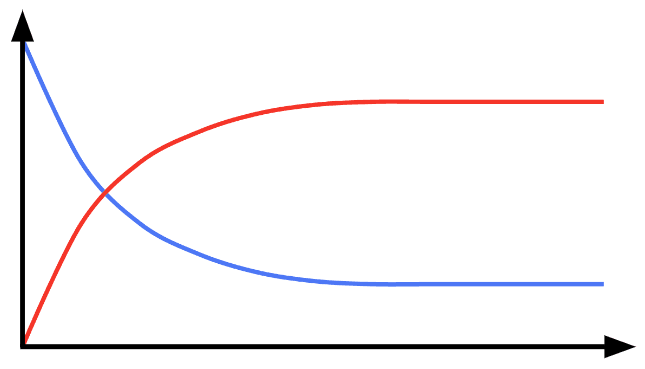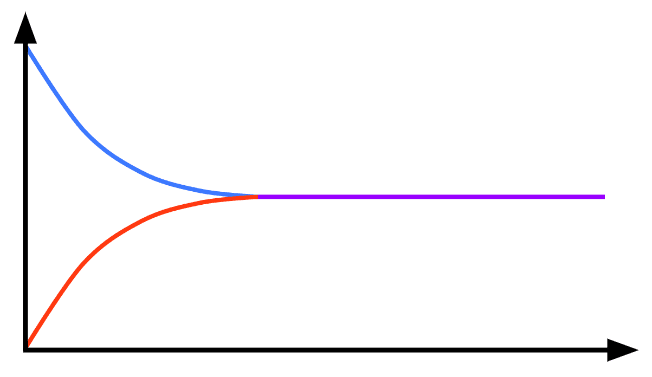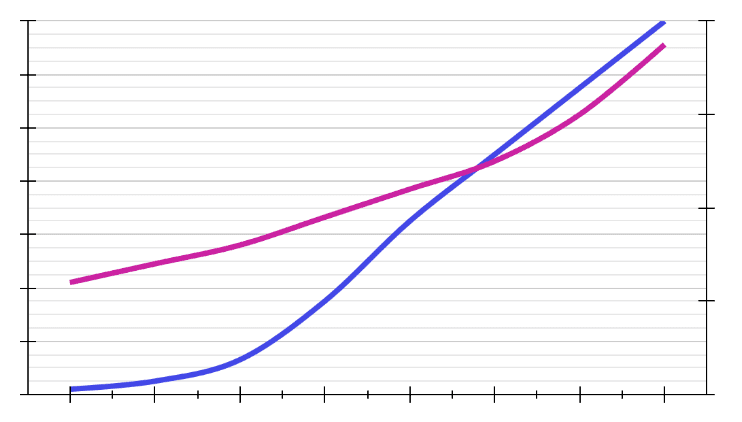Factors affecting equilibrium
I can explain how changes in pressure, temperature and concentration, as well as addition of catalysts, affect the equilibrium position of a reversible reaction.
Factors affecting equilibrium
I can explain how changes in pressure, temperature and concentration, as well as addition of catalysts, affect the equilibrium position of a reversible reaction.
These resources will be removed by end of Summer Term 2025.
Lesson details
Key learning points
- Catalysts, pressure, temperature & concentration of solutions can affect equilibrium position of a reversible reaction.
- If the conditions of a reversible reaction are changed, the equilibrium will move to counteract that change.
- A catalyst increases the rate at which equilibrium is achieved.
- Increasing temperature increases the rate of both reactions; equilibrium shifts in favour of the endothermic reaction.
- Increasing the concentration or pressure of a substance increases the rate of reaction; equilibrium shifts in response.
Keywords
Le Chatelier’s principle - states that if a dynamic equilibrium is disturbed by changing the conditions, the equilibrium position ‘shifts’ to counteract the change.
Dynamic equilibrium - occurs in a closed system when the forward and backward reactions of a reversible chemical reaction occur at the same rate; and the concentrations of reactants and products remain constant.
Equilibrium position - refers to the relative concentrations of reactants and products in a reversible reaction at equilibrium.
Reaction rate - is the speed with which a chemical reaction takes place, measured by the amount of a reactant used or amount of product formed in a given time.
Common misconception
At dynamic equilibrium the reactions stop; increasing pressure always shifts equilibrium to one side; increasing temperature always favours product formation; catalysts shift the equilibrium position.
At dynamic equilibrium, reactions continue at equal rates. Pressure shifts equilibrium only if gas molecule numbers differ. Temperature favours the endothermic direction when increased. Catalysts speed up reaching equilibrium but don't shift it.
To help you plan your year 11 combined science lesson on: Factors affecting equilibrium, download all teaching resources for free and adapt to suit your pupils' needs...
To help you plan your year 11 combined science lesson on: Factors affecting equilibrium, download all teaching resources for free and adapt to suit your pupils' needs.
The starter quiz will activate and check your pupils' prior knowledge, with versions available both with and without answers in PDF format.
We use learning cycles to break down learning into key concepts or ideas linked to the learning outcome. Each learning cycle features explanations with checks for understanding and practice tasks with feedback. All of this is found in our slide decks, ready for you to download and edit. The practice tasks are also available as printable worksheets and some lessons have additional materials with extra material you might need for teaching the lesson.
The assessment exit quiz will test your pupils' understanding of the key learning points.
Our video is a tool for planning, showing how other teachers might teach the lesson, offering helpful tips, modelled explanations and inspiration for your own delivery in the classroom. Plus, you can set it as homework or revision for pupils and keep their learning on track by sharing an online pupil version of this lesson.
Explore more key stage 4 combined science lessons from the Industrial chemistry unit, dive into the full secondary combined science curriculum, or learn more about lesson planning.

Licence
Starter quiz
6 Questions
a state where the forward and backward reaction rates are equal
the speed of chemical reactions: amount of matter used/made over time
factors including temperature and pressure that affect reaction rate
the amount of reactant or product in a defined volume of space



Exit quiz
6 Questions
a chemical which speeds up the rate at which equilibrium is achieved
the relative concentrations of reactants and products at equilibrium
the equilibrium position shifts to counteract a change in conditions


